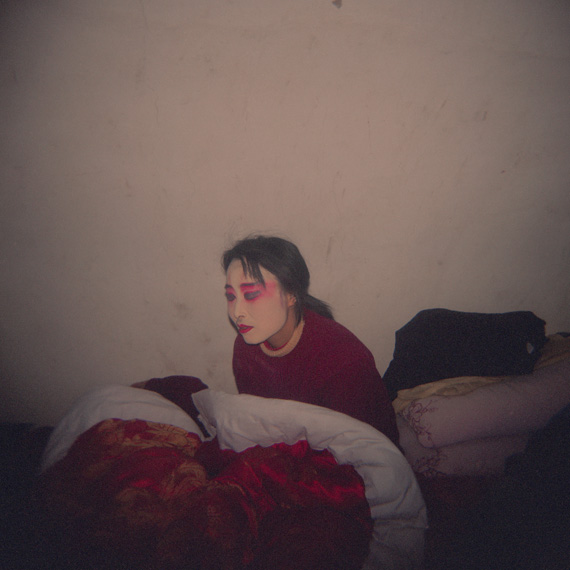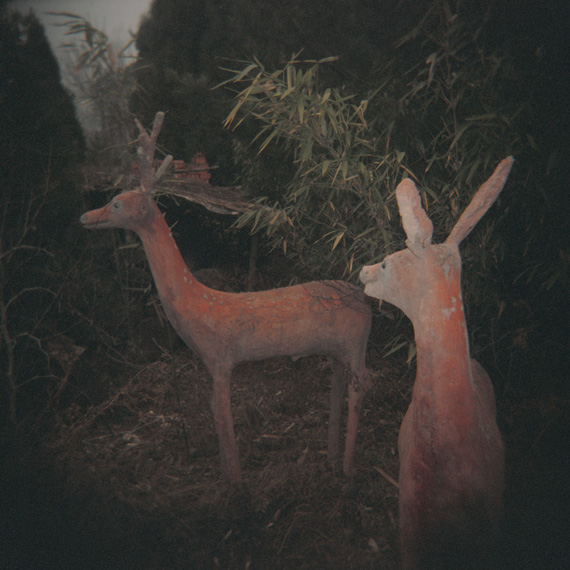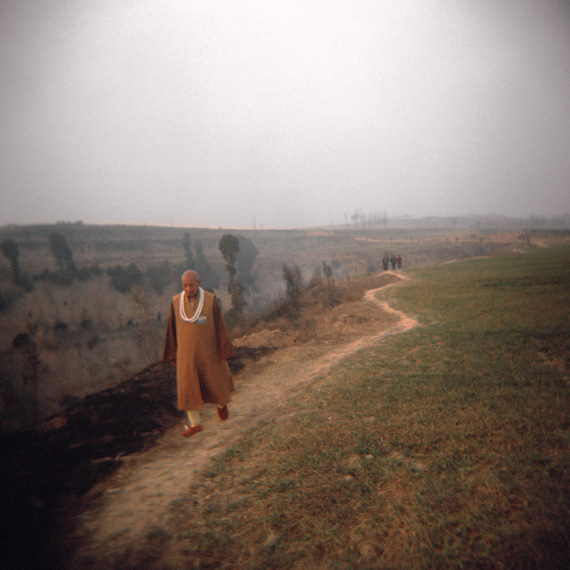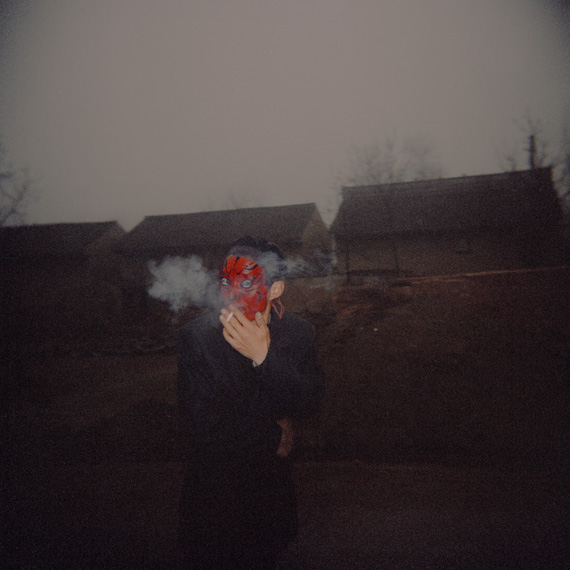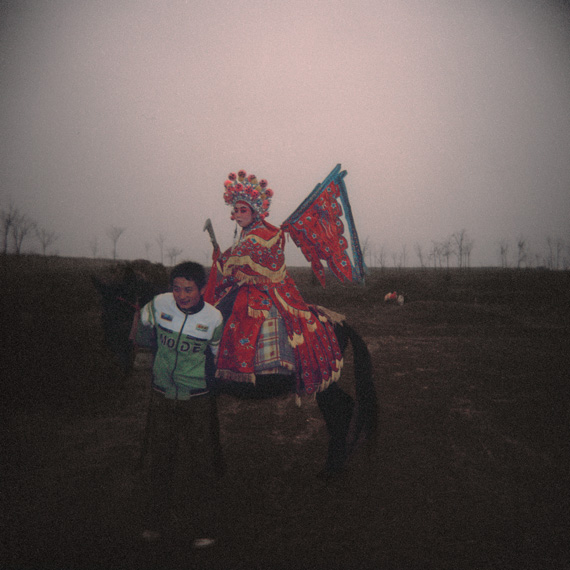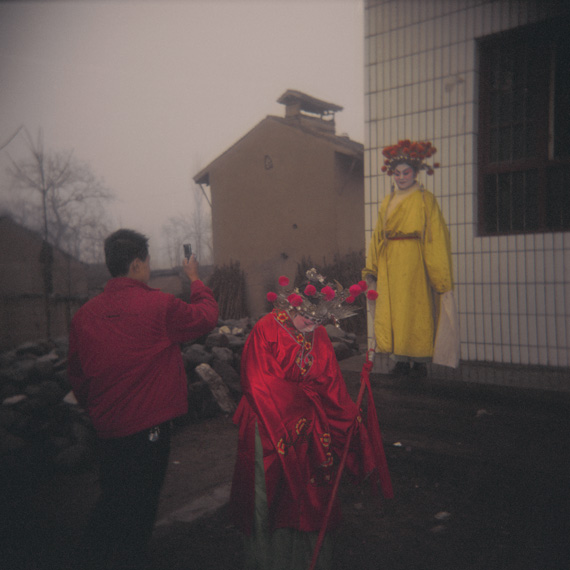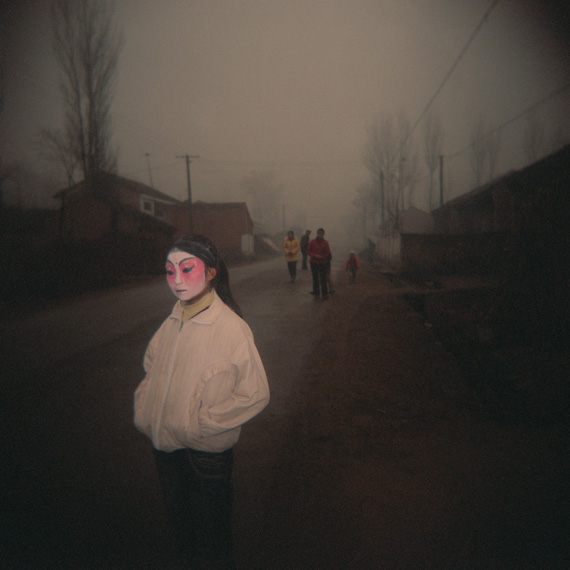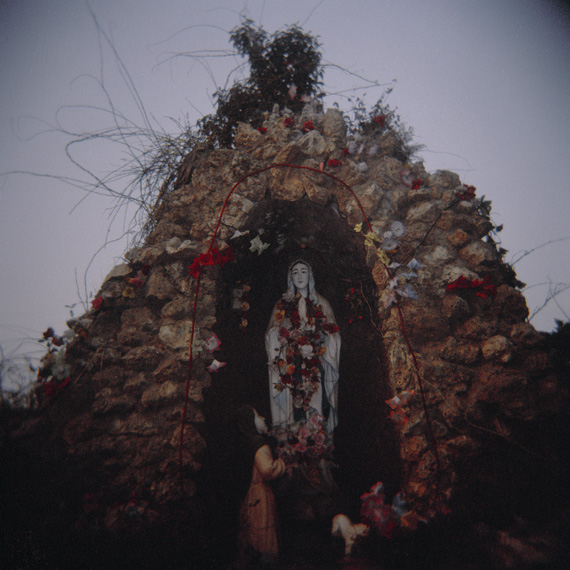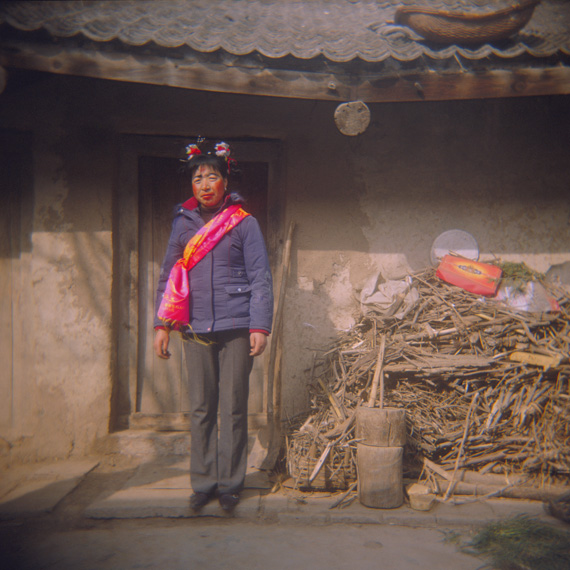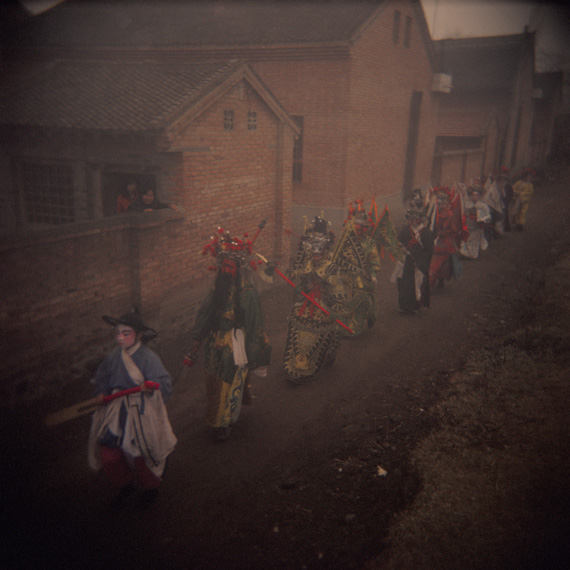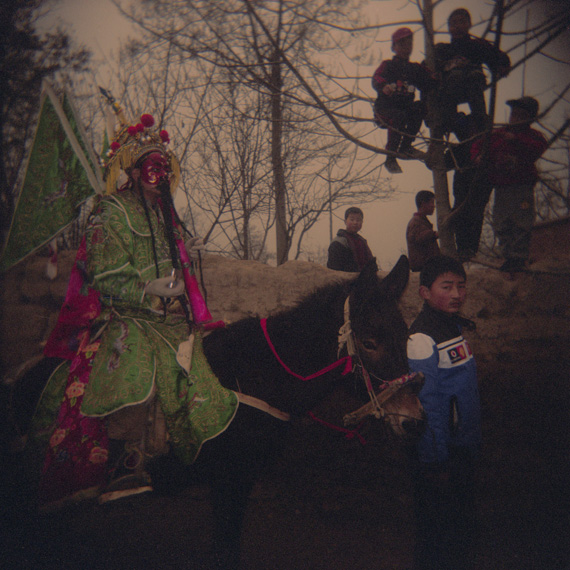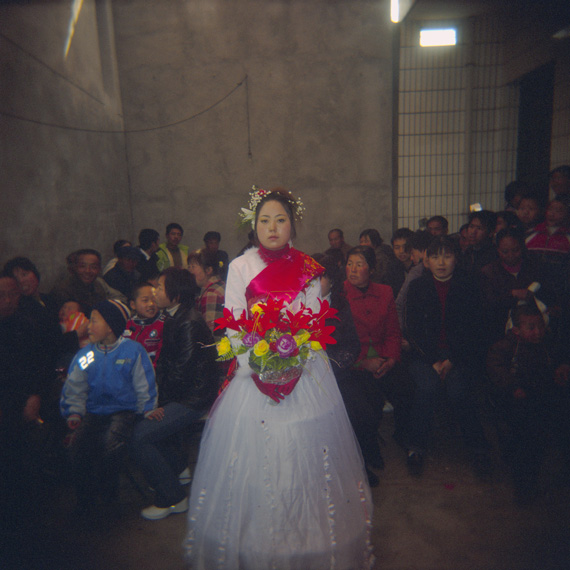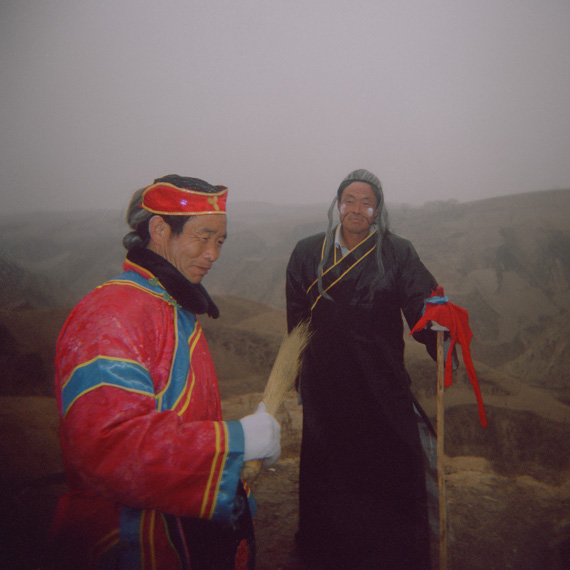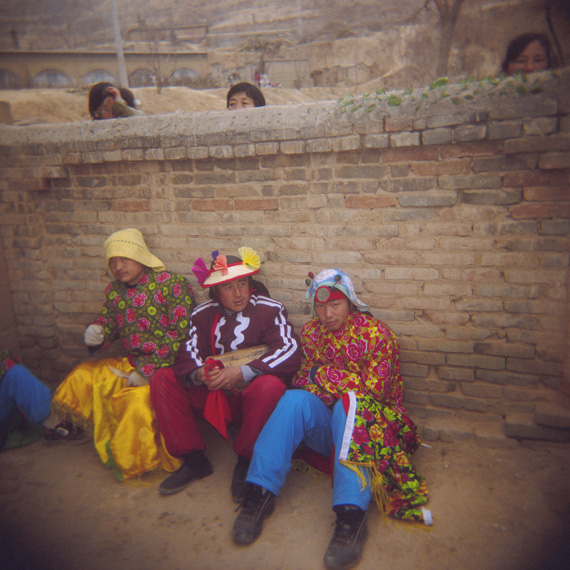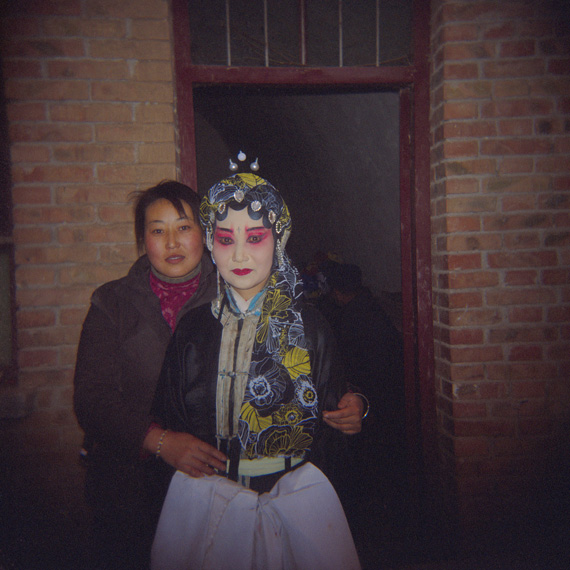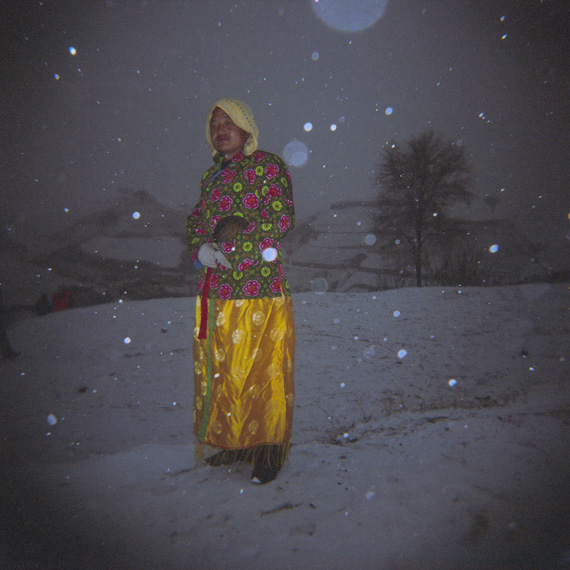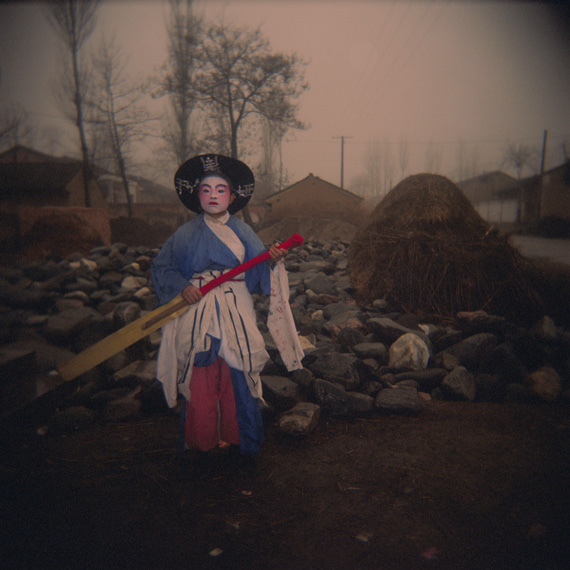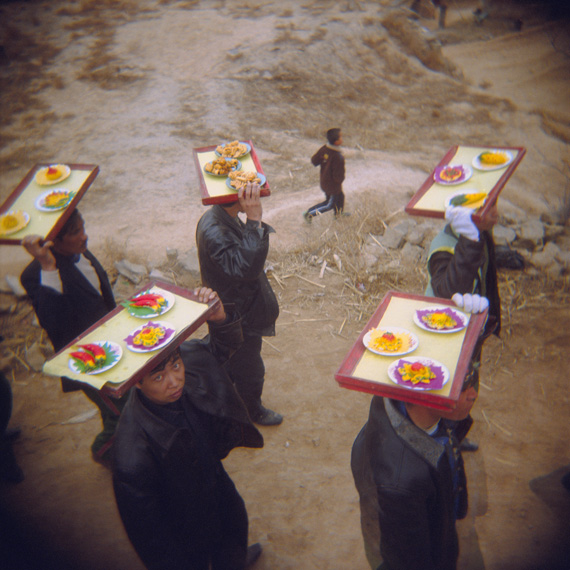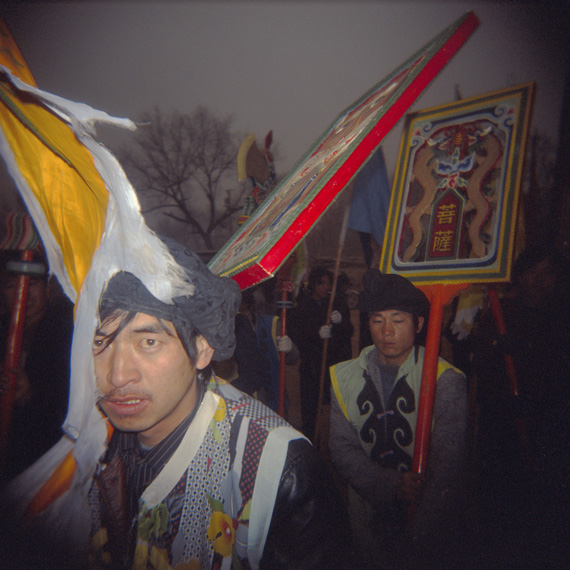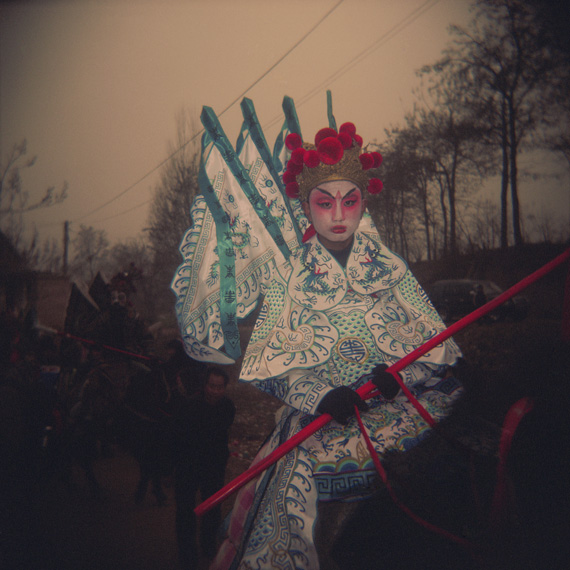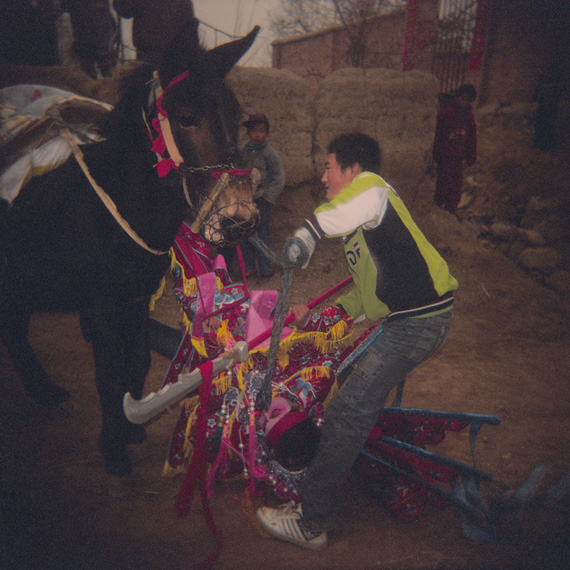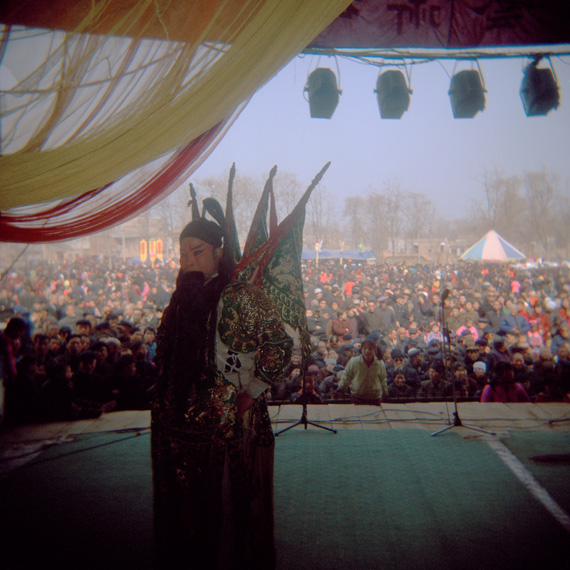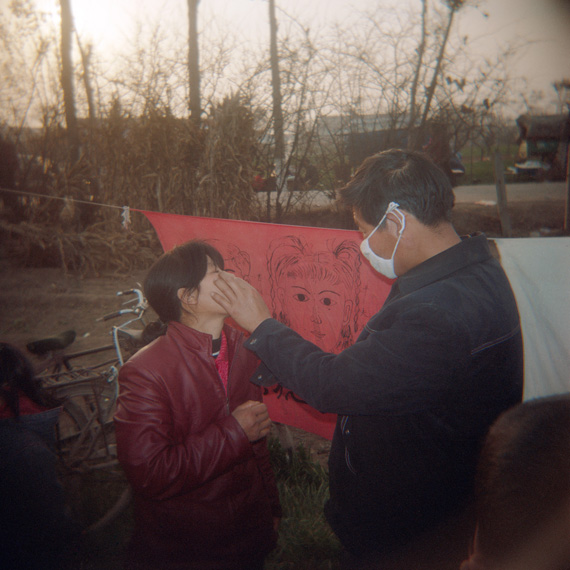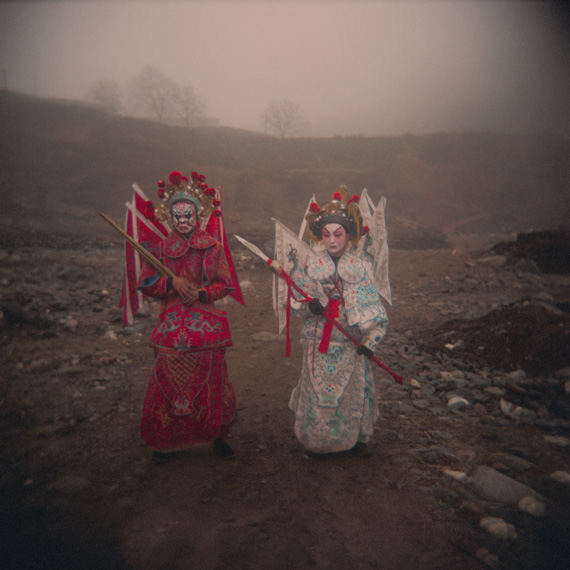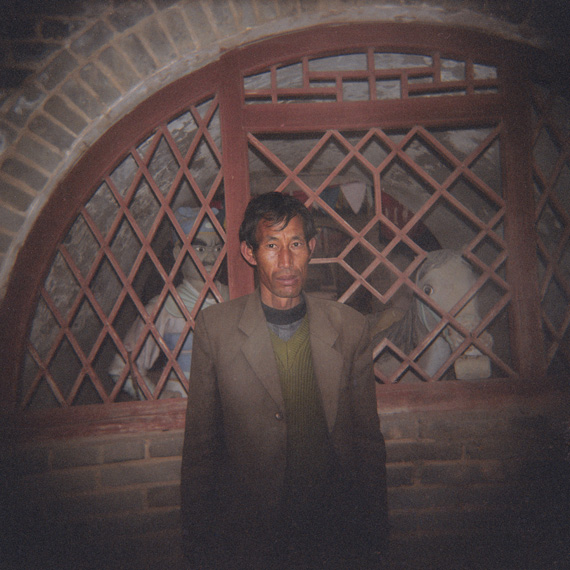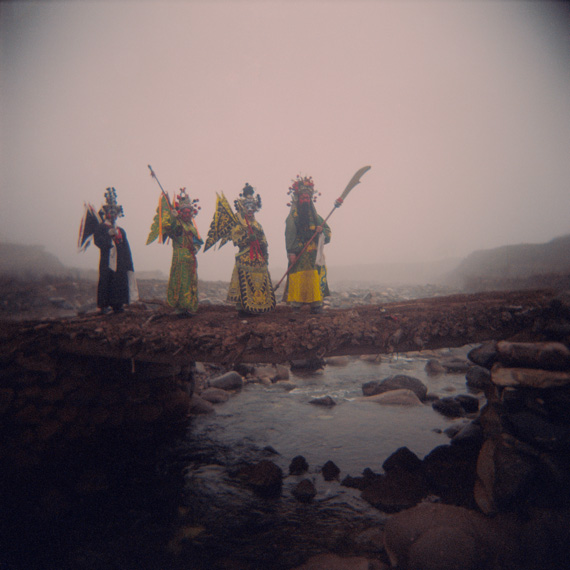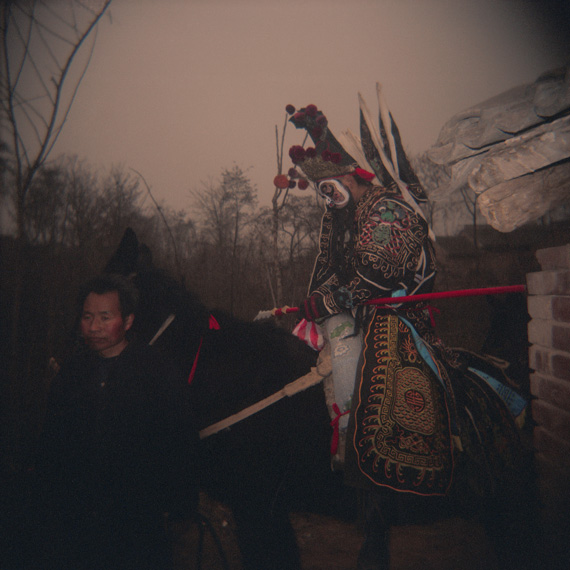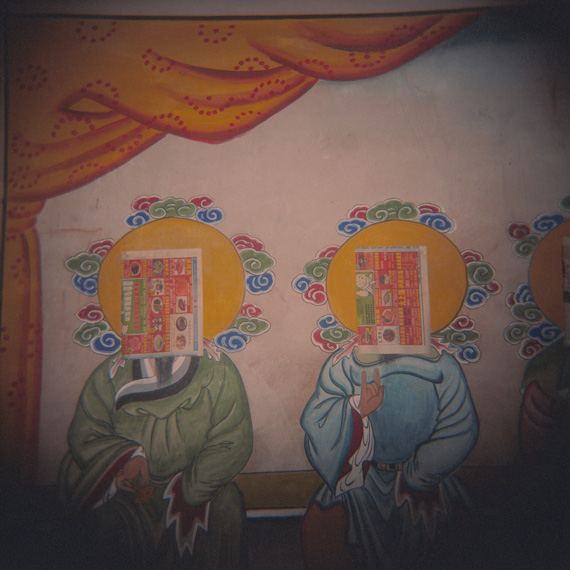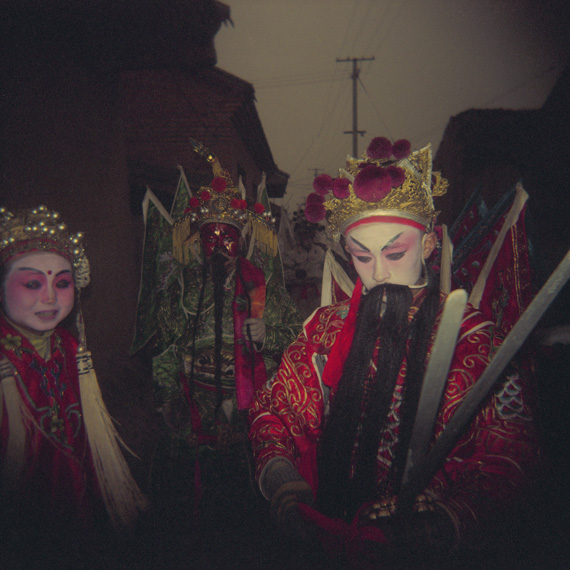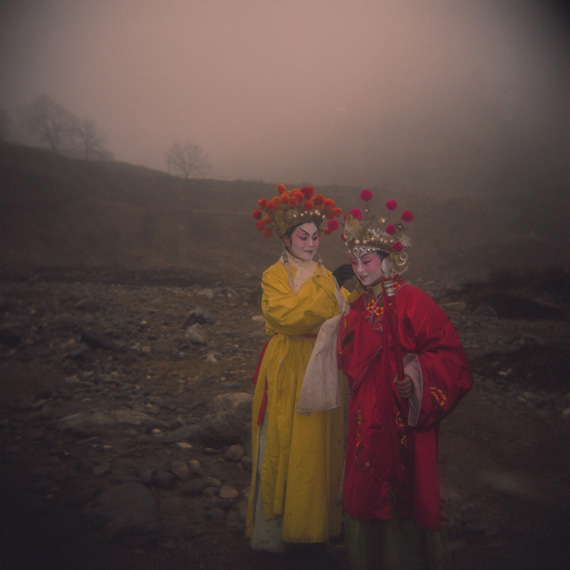Shanxi - Zhang Xiao . "a glimpse of a world of pagan custom, dreamlike and entrancing"
by 5t1V August 2 2016.
"These photographs were taken in Shanxi Province in northwest China. They document old customs originating from pagan ritual practices.
They are, in effect, a voodoo-esque form of totem worship. A number of these ancient customs still survive and remain some of the most
important cultural practices during the Lunar New Year throughout most of Shanxi. It appears that the participants have created a dramatic
and otherworldly stage—dressing in stunning costumes and exquisitely painting their faces to represent the identities of Gods otherwise long
forgotten.
When I first witnessed the participants line up and then parade around the village, I repeatedly kept asking myself whether I had literally
stepped into some sort of wonderland. The scenes I gazed at were far too bizarre and illusionary to be connected to events in the real world.
Compared with the monotony of their usual rural lives, everyone involved into these celebrations transformed into something quite
extraordinary—appearing no longer as mere peasants, but as powerful Gods from ancient mythology.With every glimpse of the unfolding events,
I saw an overwhelming sense of joy and happiness that saturated the atmosphere and I tried not to disturb this beautiful dream state
I found myself in. I truly hoped that I would never wake up."
Zhang Xiao (simplified Chinese: 张晓; traditional Chinese: 張曉, born 23 November 1981, in Yantai) is a Chinese photographer who
has published several series of photographs of China in flux.
Zhang used a Holga again for the square, colour photographs of traditional rituals surrounding the lunar new year in Shaanxi. The book
Shanxi was first published by Little Big Man in the United States; Sean O'Hagan describes it as "a seductive book, a glimpse of a world
of pagan custom that somehow endures against the odds, dreamlike and entrancing".
山西 - 張筱。 “異教風俗的世界一瞥,如夢如幻和著迷”
通過5t1V 2016年8月2日。
“這些照片拍攝於山西省中國西北地區。他們的文件從異教儀式的做法源於古老的習俗。
他們是,實際上,圖騰崇拜巫術式的形式。許多這些古老的習俗仍然屹立不倒,並保持一些最
春節期間重要的文化習俗在大多數山西。看來,參加者已經創建了一個戲劇性的
和超凡脫俗的舞台打扮令人驚嘆的服裝,精美油畫他們的臉,代表神,否則長的身份
忘記了。
當我第一次親眼目睹了參加排隊,然後遊行隊伍繞村,我反复不斷地問自己,我是否有從字面上
步入某種仙境。我凝視著在幕後遠過於離奇和幻想被連接到在現實世界中的事件。
他們一貫的農村生活的單調相比,每個人都參與到這些慶祝活動轉化成相當的東西
從古代mythology.With不凡,顯現不再作為單純的農民,但強大的神展開活動的一切機會,
我看到了快樂和幸福的壓倒性意義上,飽和的氣氛,我試圖不要打擾這個美麗的夢的狀態
我發現自己。我真的希望我永遠不會醒來。“
張嘯(簡體中國:張曉;中國傳統:張曉,1981年出生的11月23日,在煙台)是中國攝影師誰
出版了幾一系列通量中國的照片。
張某再次使用Holga的傳統儀式周圍的農曆新年在陝西廣場,彩色照片。書
山西最早是由小巨人在美國出版;肖恩奧黑根將其描述為“一個誘人的書,一個世界的一瞥
異教風俗,不知怎的,對禁的可能性,如夢如幻和著迷的。“
Shānxī - zhāng xiǎo. “Yìjiào fēngsú de shìjiè yīpiē, rú mèng rú huàn hé zháomí”
tōngguò 5t1V 2016 nián 8 yuè 2 rì.
“Zhèxiē zhàopiàn pāishè yú shānxī shěng zhōngguó xīběi dìqū. Tāmen de wénjiàn cóng yìjiào yíshì de zuòfǎ yuán yú gǔlǎo de xísú.
Tāmen shì, shíjì shang, túténg chóngbài wūshù shì de xíngshì. Xǔduō zhèxiē gǔlǎo de xísú réngrán yìlì bù dǎo, bìng bǎochí yīxiē zuì
chūnjié qíjiān zhòngyào de wénhuà xísú zài dà duōshù shānxī. Kàn lái, cānjiā zhě yǐjīng chuàngjiànle yīgè xìjùxìng de
hé chāofán tuōsú de wǔtái dǎbàn lìng rén jīngtàn de fúzhuāng, jīngměi yóuhuà tāmen de liǎn, dàibiǎo shén, fǒuzé zhǎng de shēnfèn
wàngjìle.
Dāng wǒ dì yī cì qīnyǎn mùdǔle cānjiā páiduì, ránhòu yóuxíng duìwǔ rào cūn, wǒ fǎnfù bùduàn de wèn zìjǐ, wǒ shìfǒu yǒu cóng zìmiàn shàng
bù rù mǒu zhǒng xiānjìng. Wǒ níngshìzhe zài mùhòu yuǎn guòyú líqí hé huànxiǎng bèi liánjiē dào zài xiànshí shìjiè zhōng de shìjiàn.
Tāmen yīguàn de nóngcūn shēnghuó de dān tiáo xiàng bǐ, měi gèrén dōu cānyù dào zhèxiē qìngzhù huódòng zhuǎnhuà chéng xiāngdāng de dōngxī
cóng gǔdài mythology.With bùfán, xiǎnxiàn bù zài zuòwéi dānchún de nóngmín, dàn qiángdà de shén zhǎnkāi huódòng de yīqiè jīhuì,
wǒ kàn dàole kuàilè he xìngfú de yādǎo xìng yìyì shàng, bǎohé de qìfēn, wǒ shìtú bùyào dǎrǎo zhège měilì de mèng de zhuàngtài
wǒ fāxiàn zìjǐ. Wǒ zhēn de xīwàng wǒ yǒngyuǎn bù huì xǐng lái.“
Zhāng xiào (jiǎntǐ zhōngguó: Zhāng xiǎo; zhōngguó chuántǒng: Zhāng xiǎo,1981 nián chūshēng de 11 yuè 23 rì, zài yāntái) shì zhōngguó shèyǐng shī shuí
chūbǎnle jǐ yī xìliè tōng liàng zhōngguó de zhàopiàn.
Zhāng mǒu zàicì shǐyòng Holga de chuántǒng yíshì zhōuwéi de nónglì xīnnián zài shǎnxī guǎngchǎng, cǎisè zhàopiàn. Shū
shānxī zuìzǎo shì yóu xiǎo jùrén zài měiguó chūbǎn; xiào ēn ào hēi gēn jiāng qí miáoshù wèi “yīgè yòu rén de shū, yīgè shìjiè de yīpiē
yìjiào fēngsú, bùzhī zěn di, duì jìn de kěnéng xìng, rú mèng rú huàn hé zháomí de.“
